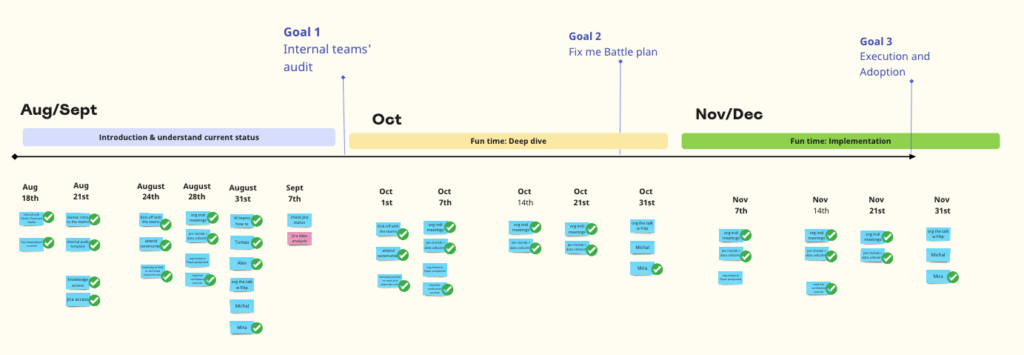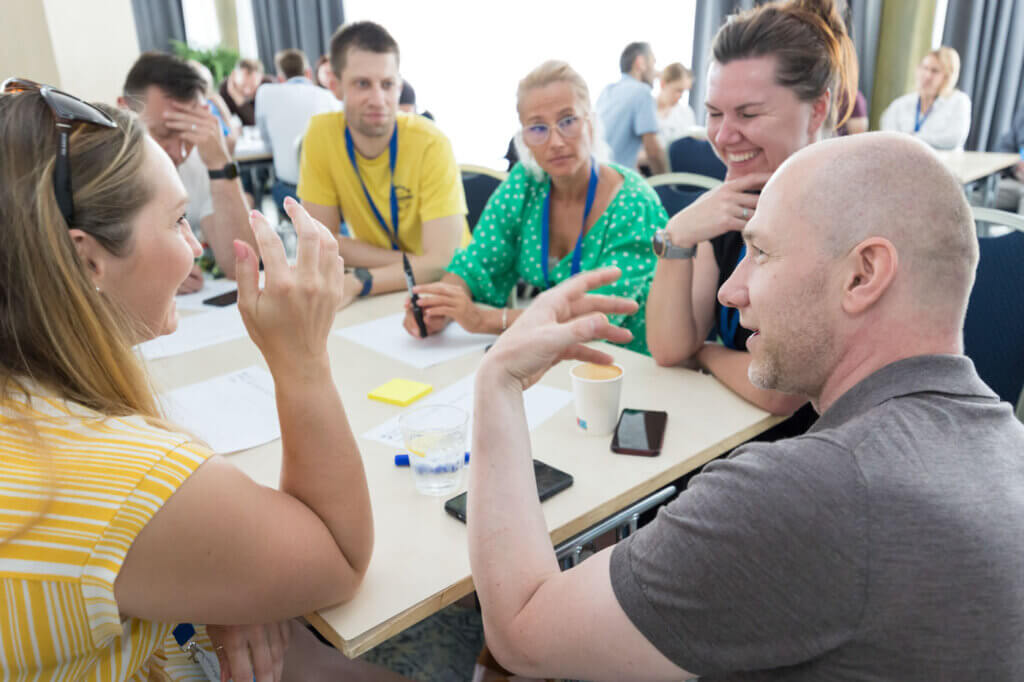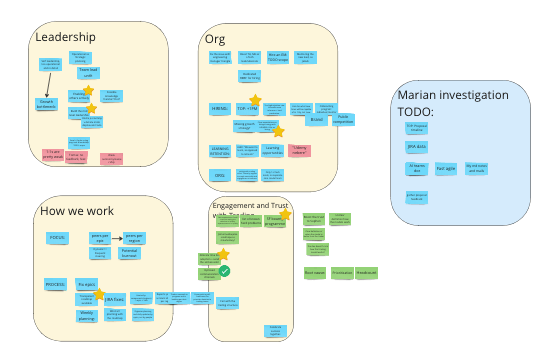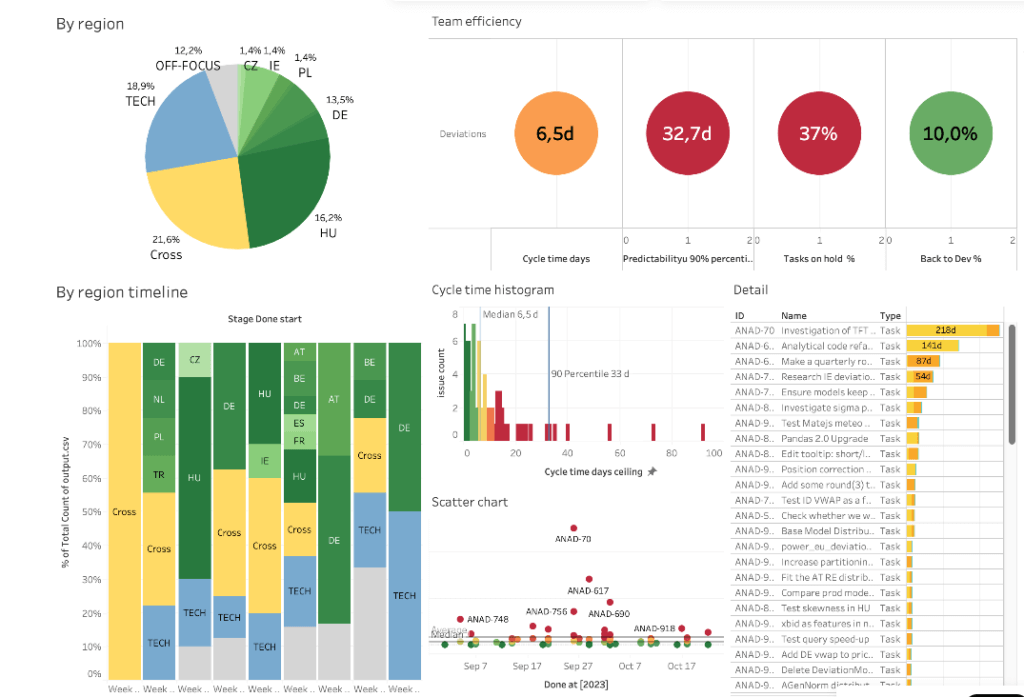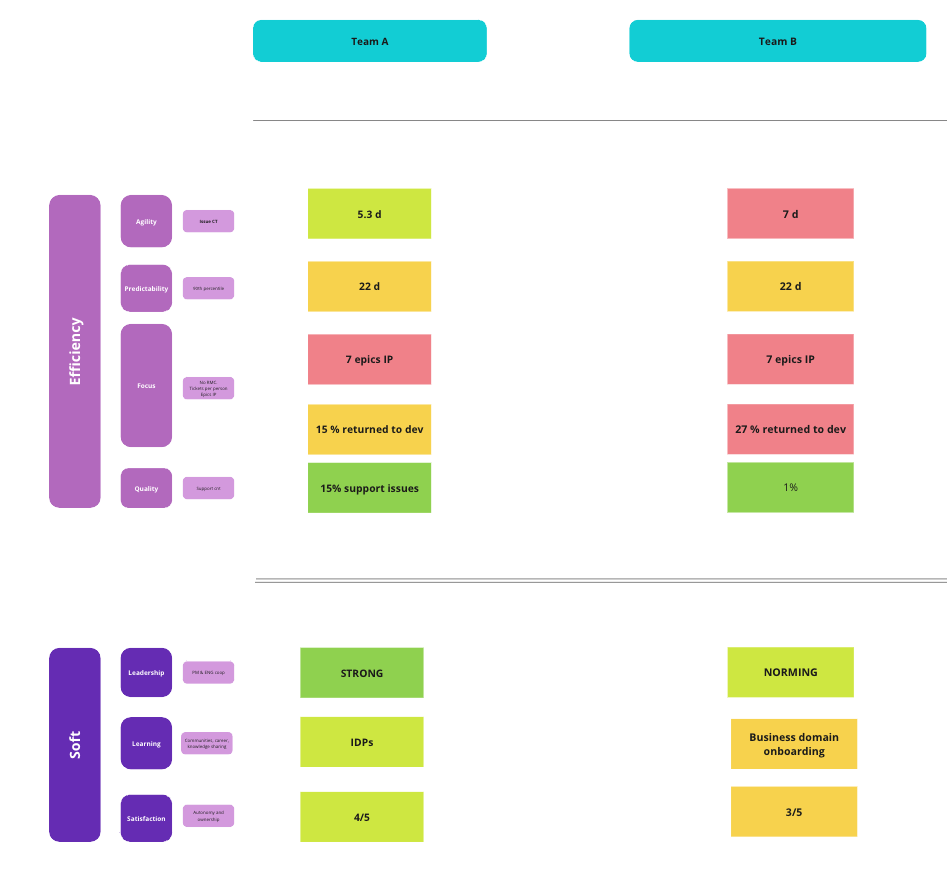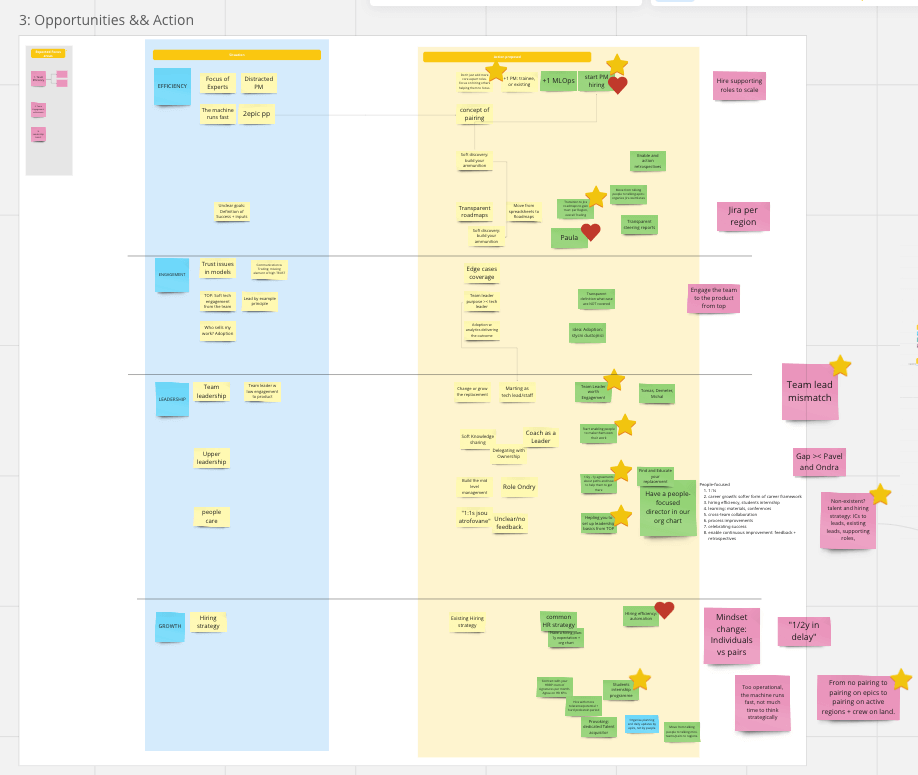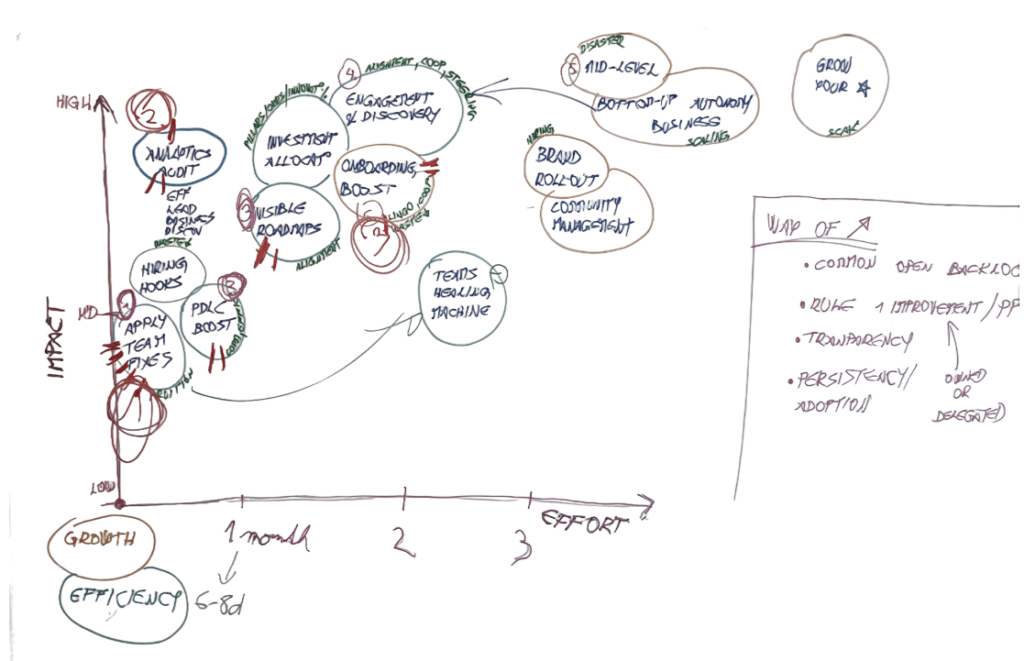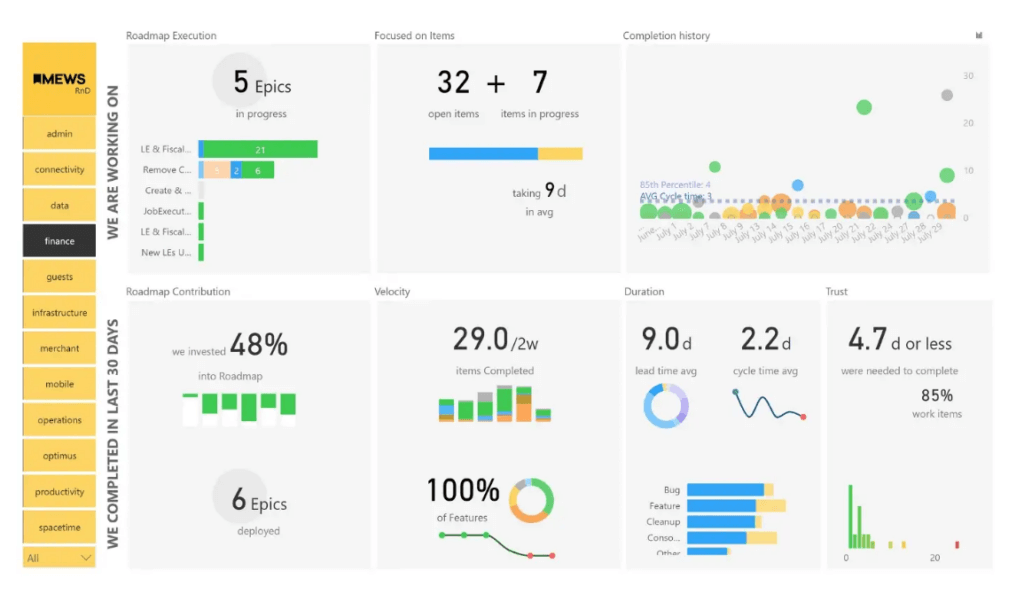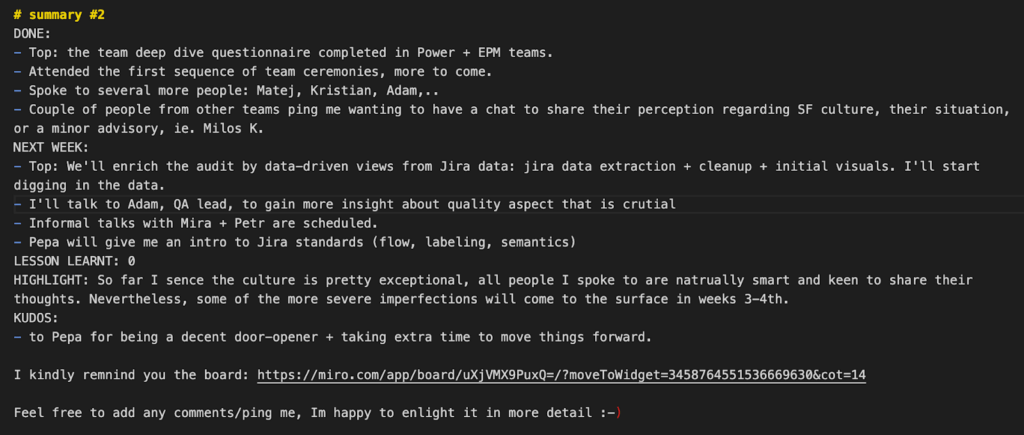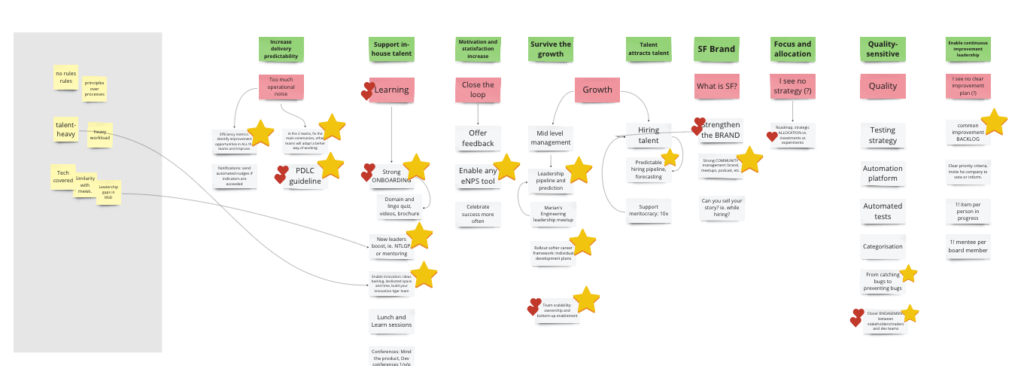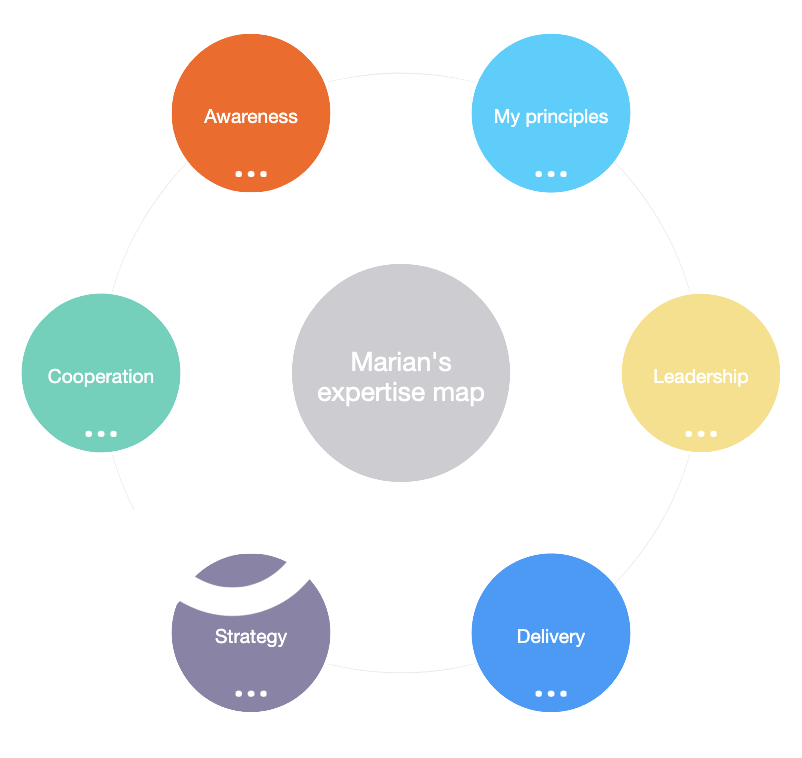Are you a Magician? 🪄
Why should I trust your bold statements, Marian?
First things first
I offer no theory. I differentiate from the rest the way I see the company as a whole living set of organs from top, as opposed to proclaiming Agility is the holy grail that'll save you.
I've been on your side and turned companies to success by boosting tech. The tech department is not an inevitable evil. In my eyes, it's a weaponery that can beat competitors or gain us to the new serie investment round, when we get it right.
Transparency principle
I’ve learned that I need to be straightforward with my insights, even if it might surprise or upset some people. Being clear helps the message get through. I experience true managers appreciating honesty over my attempt to sound more reassuring and hide the truth between the lines.
Persistence principle
Ensure our common effort's effect stays in place for the desired time.
Background
The technical background I have is an asset. I don’t position myself as a generic business consultant. I don’t follow the dress code. I trust the “doing rather than talking” approach. If I hear “We’re incapable of doing X” for whatever reason, I assemble a written proposal on the same day, or I wear my coding hoodie, run an IDE and build a “proof of concept” and forward.
Expertise
No way could I provide an upper value if I had no extensive knowledge outside of my engineering bubble. Specifically, it covers product management, company leadership models, and HR, including decent knowledge of finance, GTM strategies, M&A and marketing. A good example is engineering delivery, where the root cause of potential inefficiency could lie in product management, continuous discovery, or the disconnect between the roles. We want the teams to fire with well-prepared ammunition.
Pay as we go
I openly communicate I’m not looking for long-term contracts to squeeze the client. Instead, I act fast. I embrace the current situation and gain trust through “doing over talking”. Then, I execute the demanded assignment while paying particular attention to adoption. I pass the finish line with a wow factor, and move on to the next client with a positive reference and an expanded network.
No outcome no money
If, for any objective reason, I'd ever fail, you're in the power of asking for the fill compensation. Period. I value my reputation too much to fail.
My signature
This is the wow factor in what I do. I make changes persistent, ensuring the adoption of a change is widely accepted, as opposed to seeing ruins two weeks after I move on. I put extensive effort into gaining trust and prepared a well-tailored battle plan first.
Not starting from the middle
It makes a huge difference when I really get to know a client from the ground up. Besides the assignment, when I get adequate space to understand the business, vision, and scope, and have an opportunity for informal chats with stakeholders, my work is more effective.
A single advisory client in parallel
I quickly realized taking on more than one on-site advisory client at the same time was chaos. Too much swapping between tasks and topics, and it was a tough lesson with sleepless nights.

